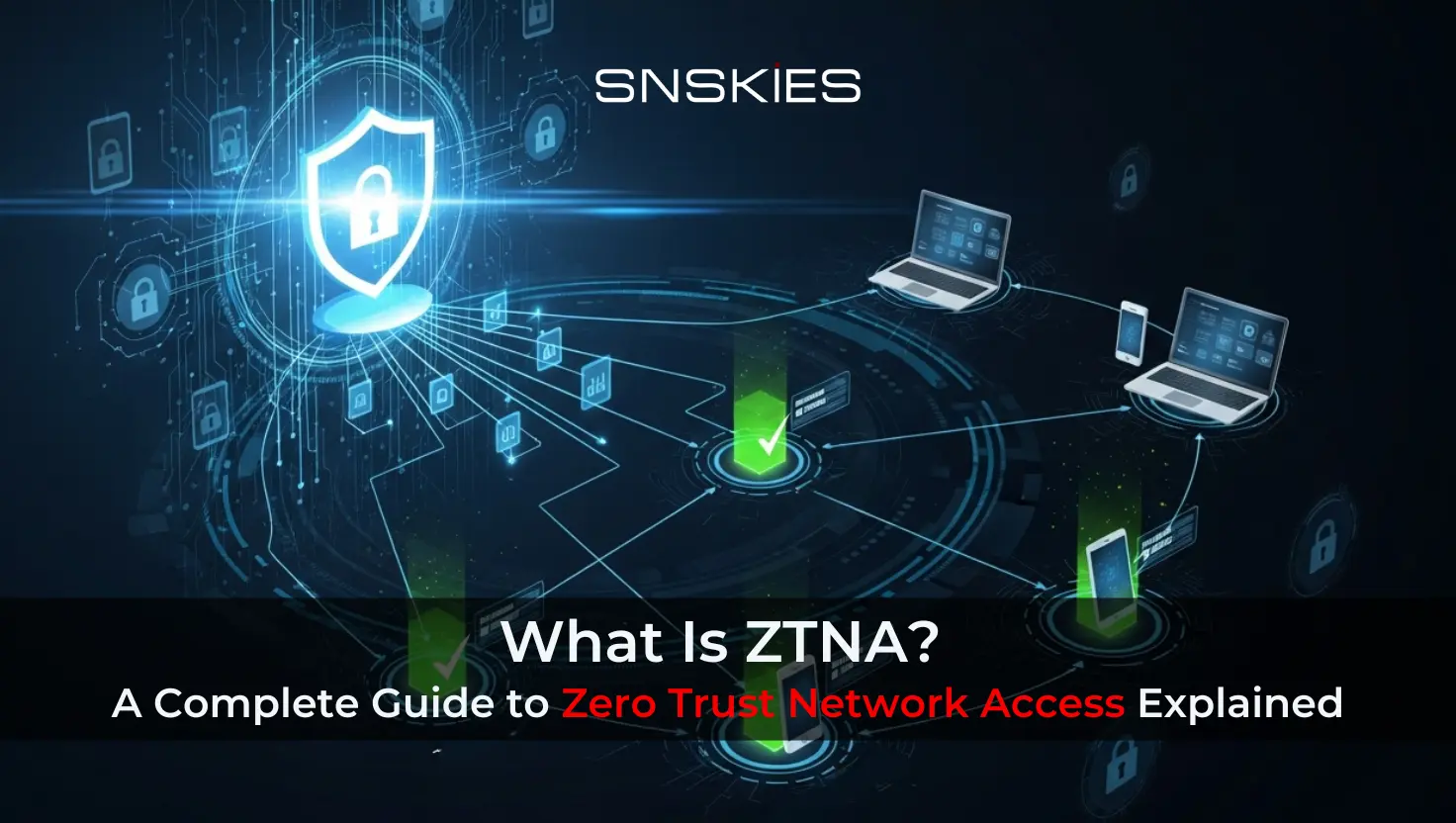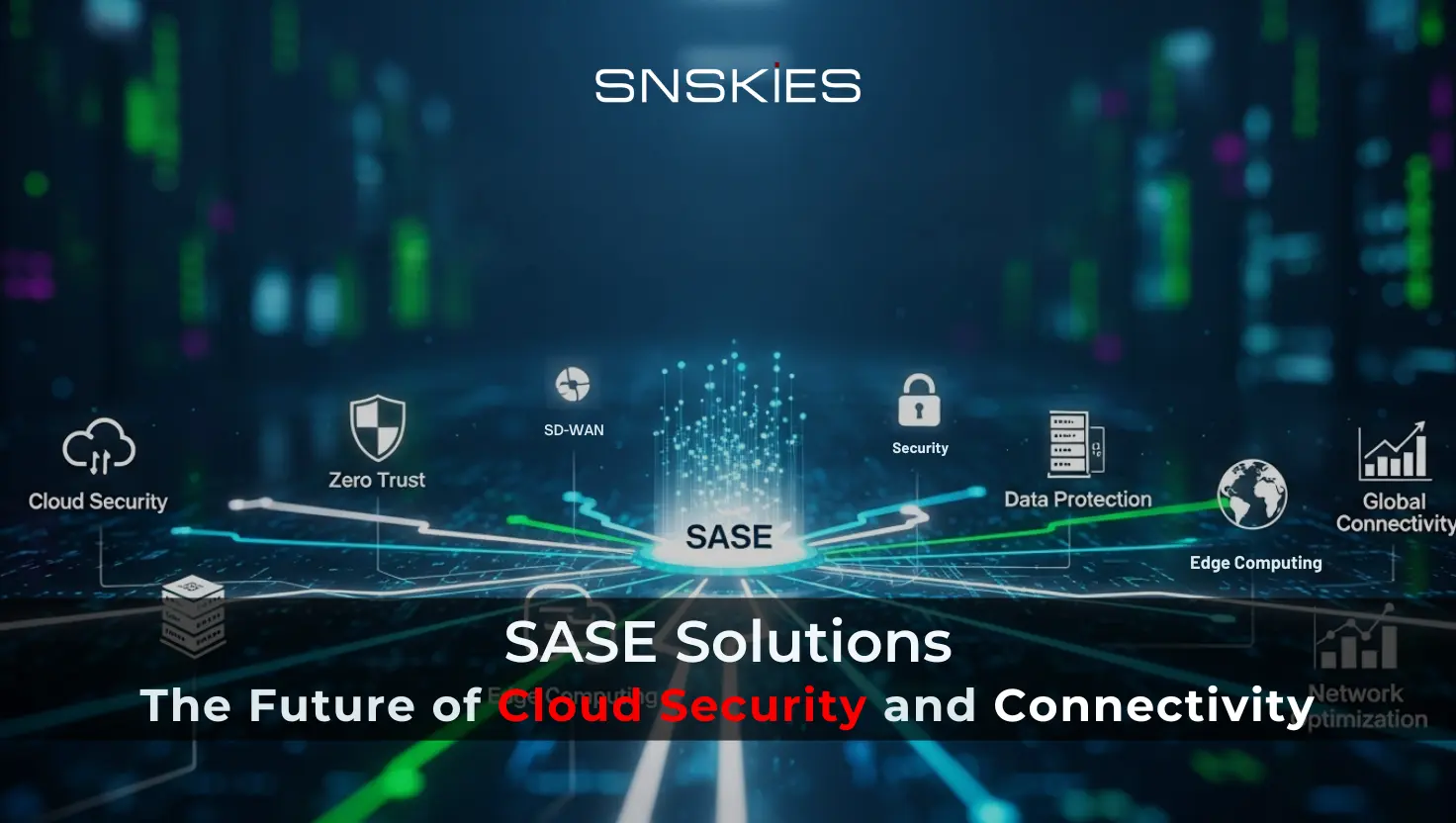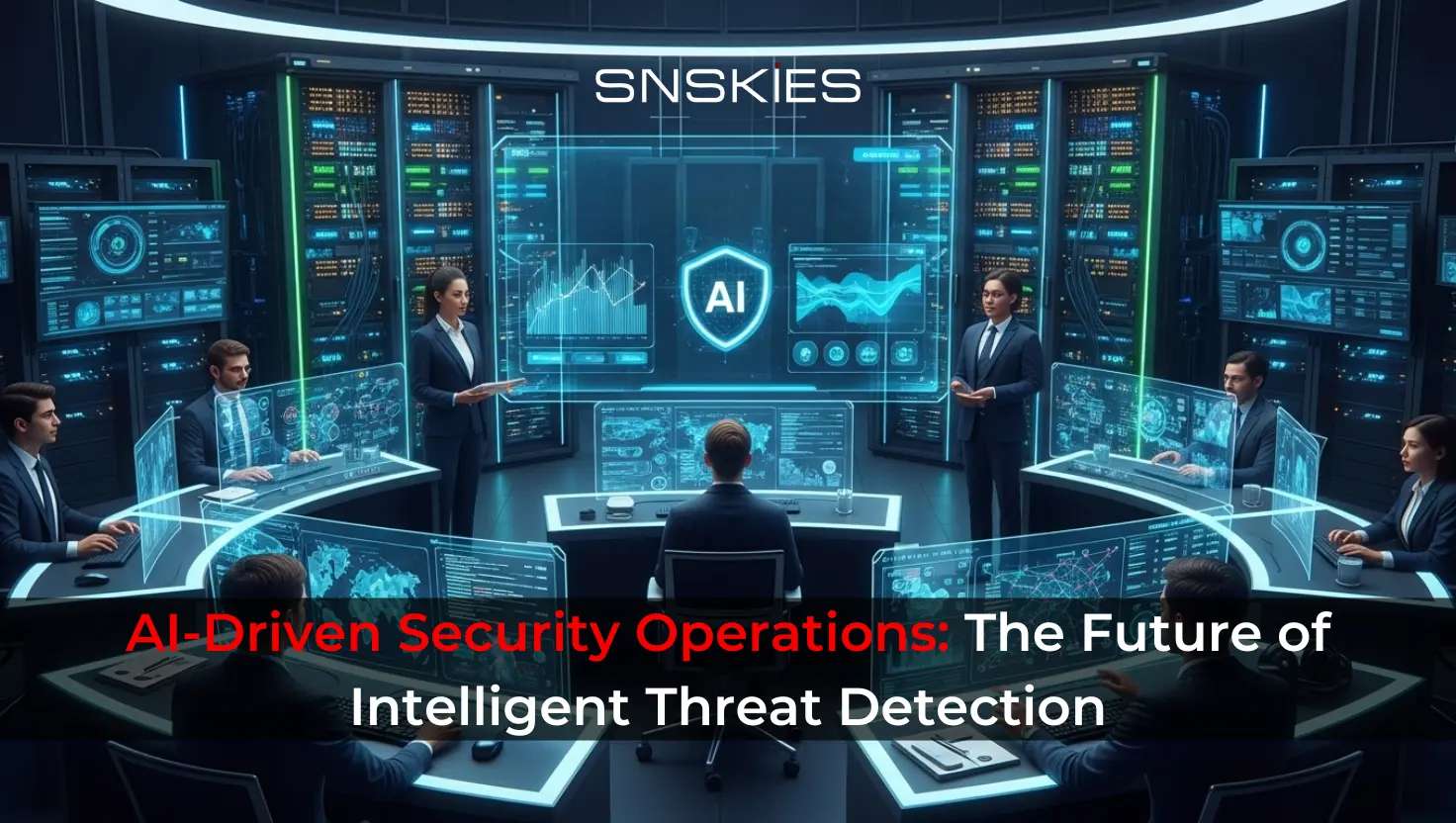- Articles
What is ZTNA? SNSKIES Guide to Zero Trust Application Access
- Articles
What is ZTNA? SNSKIES Guide to Zero Trust Application Access
- Articles
- October 9, 2025
Securing Application Access: SNSKIES Framework for the Modern Hybrid Enterprise
The Evolution to Application-Centric Security
The exponential growth of the distributed workforce has fundamentally redefined the corporate security perimeter. Employees now access critical business applications hosted across data centers and various cloud environments from numerous non-traditional locations. Relying on legacy Virtual Private Networks (VPNs) is no longer viable, as they grant broad, implicit network access that dramatically expands the attack surface.
The definitive solution is Zero Trust Network Access (ZTNA). ZTNA implements the core philosophy of “never trust, always verify,” establishing highly granular, context-aware security policies that connect users directly to the specific applications they need, based on verified identity and device compliance.
The Zero Trust Framework: Snskies Approach to Granular Control
Snskies designs and deploys next-generation access solutions that pivot security from network trust to explicit verification. Our framework ensures access is consistently applied across all users, whether they are working in the office or remotely.
The core of this architecture relies on tightly integrated components that replace broad network access with secure, segmented application tunnels:
- Application Access Gateway: This intelligent enforcement point acts as an intermediary, hiding private applications from the internet and brokering secure, encrypted sessions.
- Continuous Device Posture Check: A lightweight endpoint agent constantly assesses the user’s device, verifying its security compliance (e.g., encryption status, patching levels) in real-time.
- Unified Policy Engine: This engine correlates user identity, verified through multi-factor authentication, with the device’s posture to make a dynamic access decision.
Snskies leverages the powerful and highly scalable platform technology developed by our trusted partner, Fortinet, to deliver this unified ZTNA control.
This architectural strategy eliminates lateral movement risk, as access is restricted to the specific, authorized application and is continuously re-verified throughout the user’s session.
Strategic Business Benefits
By deploying Snskies ZTNA solution, organizations realize immediate and long-term strategic advantages:
- Significant Risk Reduction: The attack surface is minimized because users are only granted least-privilege access to necessary applications, not the entire corporate network.
- Enhanced User Experience: Employees benefit from a seamless and “always-on” connection that is superior to traditional remote access methods, supporting higher productivity and collaboration.
- Operational Simplicity: Centralized management of policies across the security platform simplifies administration, ensures consistent governance, and streamlines security audit processes.
- Future-Proofing: This ZTNA foundation is fully scalable and aligns with the requirements of a modern Secure Access Service Edge (SASE) architecture, positioning the enterprise for future security convergence.
Conclusion
Adopting Universal Zero Trust Access is a critical step in securing the modern digital landscape. By implementing this advanced framework, organizations can confidently protect their most valuable applications while simultaneously empowering their hybrid workforce with secure, frictionless connectivity.
Recent Post
- All Posts
- Articles


